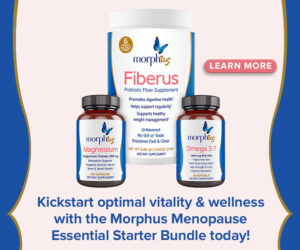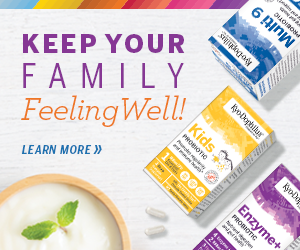
I believe it is safe to assume all of us use some form of personal care product such as toothpaste, lotions, make-up, soaps, hair care products, and more. Unfortunately, many commercial personal care products have harmful chemicals and hidden ingredients. It takes considerable research just to identify what the strange funny names on these products really are! In addition, not all ingredients have to be listed! Beware, the laws protect the manufacturer and not you, the consumer.
Read more about product labeling laws
Nicotine and medical skin patches work because our skin absorbs their chemicals. What goes on our skin goes in our bodies. If you would not eat it, don’t put it on your skin either. Human physiology also tells us that what you put in your mouth is absorbed directly into your blood and tissues through the mucosal lining, even if you never swallow. According to The Physician's Desk Reference Manual, oral absorption can be up to 90% efficient because blood capillaries are very close to the surface inside the mouth. Potentially harmful ingredients in your toothpaste will end up in your bloodstream, most likely in seconds, and start negatively impacting your health! In the US, the Federal Drug Administration (FDA) requires fluoride toothpaste to carry a poison warning label that reads as follows:
| "WARNING: KEEP OUT OF REACH OF CHILDREN UNDER SIX YEARS OF AGE. IF YOU ACCIDENTALLY SWALLOW MORE THAN USED FOR BRUSHING, SEEK PROFESSIONAL ASSISTANCE OR CONTACT A POISON CONTROL CENTER IMMEDIATELY." |
Many types of toothpaste are loaded with exotic-sounding chemicals, most of which have been documented for their negative health effects. Hopefully the following information will help you make the choice to begin buying a healthier brand, or better yet – make your own!
Read about the 7 Scary Food Additives to Avoid
Some of these questionable ingredients include:
- Sodium saccharin – known to cause cancer in lab animals!
- Abrasive silica
- Sodium fluoride – considered corrosive. Some side effects can include: allergy to medication, osteomalacia and hyper-parathyroid osteopathy, impaired renal function, impaired liver function, and blood dyscrasia. In children it may cause salivation, nausea, vomiting, gastric pain, and diarrhea. Large doses can cause thirst, perspiration, paralysis, muscular weakness and convulsions followed by respiratory and cardiac failure.
- Phosphoric acid – no information available.
- Tetrasodium pyrophosphate
- Titanium dioxide – an inert ingredient (water repellant agent) in pesticide formulations applied to animals.
- Pentasodium triphosphate – side effects are diarrhea, fainting, headaches, cramps.
- Carrageenan – from seaweed but harmful chemicals are used in its processing. It is made into a thick acidic gel for thickening. May cause gastric upset and inhibit the absorption of nutrients.
- Sodium lauryl sulfate – regulated as a pesticide, suspected gastrointestinal or liver toxicant, eye irritation, allergic reactions and hair loss.
- FD & C Blue #1, Yellow #5 – These are food coloring and have been linked to causing cancer. Also found in many foods and vitamin supplements.
Read more about artificial colors
For a long time it has been suspected that additives like sodium lauryl sulfate, propylene glycol, and yellow dye #5 have health-damaging effects, yet they continue to be used in most personal care products. Other compounds, such as fluoride, are acknowledged by the FDA to be a significant risk to children when ingested.
Sodium lauryl sulfate (SLS) and propylene glycol are two of the most common ingredients found in many personal care products. The Journal of the American College of Toxicology reports that SLS is easily absorbed into your skin and can build up in your heart, liver, lungs and brain; even if you wash it off right after using it! The Medical College of Georgia has done tests showing that SLS forms dangerous levels of cancer-causing nitrosamines when combined with several other common ingredients found in many personal care products. Children’s bubble baths have warning labels on them! Why? They contain sodium lauryl sulfate which damages the mucous lining of the skin and causes urinary tract infections. Research to Prevent Blindness, Inc. reports sodium lauryl sulfate builds up in eye tissues and may be a cause of eyesight problems in many children. Sodium lauryl (or laureth) sulfate is also found in most shampoos.
Propylene glycol, used in many facial moisturizers and hand and body lotions, has been found, in scientific and animal testing, to cause kidney damage and liver abnormalities. Propylene glycol may damage cell membranes causing rashes, dry skin, and surface damage. Propylene glycol is the main component of anti-freeze for your car! Sadly enough, it can also be found in some food products where it is listed as natural flavor!
Tartrazine (yellow dye #5) interferes with the body's use of vitamin B6. For some people, consuming the food additive tartrazine can cause severe asthmatic breathing difficulties because it increases the release of leutriene in the body.
If these chemicals are not on the RDA (Recommended Daily Allowance), is it wise to put them on our skin, or in our body? Many ingredients in foods and other products are not listed on the RDA (Recommended Daily Allowance) list. However, product manufacturers tell us small amounts of these chemicals are safe for human use. I find this is an insult to our intelligence! In my opinion, if it is not a necessary nutrient, and could be potentially harmful, try to avoid its consumption. Ninety-nine percent of the chemicals people ingest are avoidable by being aware of product ingredients and choosing pure quality products instead, or making your own. Using toothpaste containing these harmful chemicals makes no sense at all! Is it any wonder why cancer is epidemic?
Here is a comparison of ingredients found in healthy and commercial toothpaste:
| Function | Healthy Brands | Common Commerical Brands |
| Active Ingredient: | natural clay, pure essential oils | sodium fluoride, sodium monofluorophosphate |
| Cleansing Agent: | baking soda | abrasive silica, hydrated silica |
| Moisturizer: | vegetable glycerin | glycerine, sorbitol |
| Thickener: | xanthan gum | xanthan gum, cellulose gum |
| Foaming Agent: | none | sodium lauryl sulfate |
| Sweetener: | stevia or raw honey | sodium saccharin |
| Special Tooth Health Agents: | none | pentasodium triphospate, tetrasodium pyrophosphate |
| Coloring: | you can add natural chlorophyll | titanium dioxide- artificial source |
Read more about the ingredients in personal care products
I believe nature has given us everything we need. Many cultures around the world have no commercial personal care products. I find it interesting how these cultures have fewer illnesses, much less dental problems, and live longer.
Next to diet, personal care products are essential to great health. Make sure they are pure, natural, and clean, with no harmful chemicals. Or, why not consider substituting these questionable chemicals with simple ingredients you can keep at home to make an effective, natural toothpaste for yourself? This can keep your breath fresh and can control or eliminate harmful bacteria.
Happy brushing!
Image: Joe Shlabotnik




